The Third Industrial Revolution and the Blockchain
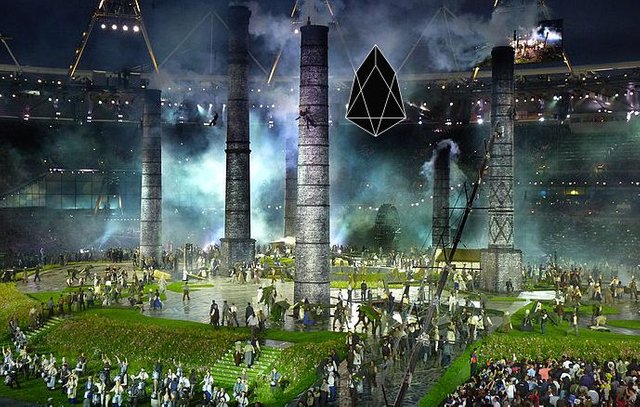
A special thank you to Jon-Eric Cook for bringing this video to my attention.
“… We’ve got one generation, yours, to lay down this new consciousness…Your responsibility, to carry this on, is a weight no generation has known in history. I don’t know of any period in history where one generation was called upon to save the species…”
That’s the challenge put forth by theorist Jeremy Rifkin in Vice’s new full-length documentary, The Third Industrial Revolution: A Radical New Sharing Economy. In the film Rifkin lectures for nearly two hours on the environmental, societal, and economic ramifications of our current culture, and how we can pivot to a more sustainable and fulfilling future. To make his point he discusses current global weather trends, touches on history, and walks the viewer through economics and philosophy. The roadmap he lays out requires what some would deem radical change in the fundamentals of our current iteration of civilization. Infrastructure would have to be built, organizations would have to be reinvented, and an economics would have to be reimagined. During this all encompassing call to action he mentioned blockchain technology ... twice.
His references to the blockchain were quick, and the casualness in which he referenced it seemed to imply a sort of familiarity with the concept, although he did not go into specifics. He spent most of the lecture educating the audience about the twenty year long global decline in productivity and the very real ramifications of climate change. But the nod to the nascent technology is there; he knows we will use it, the question is how we will use it.
General Purpose Technology Platform
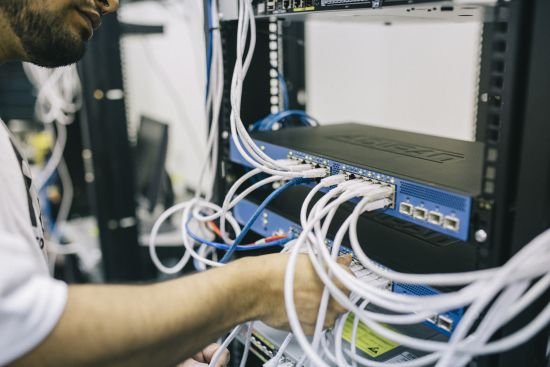
Rifkin says that in order to spearhead the third industrial revolution (TIR) we need to rebuild our general purpose technology platform (which is made up of communication tech, transportation tech and energy tech), and our society is already doing so, using the Internet of Things (IoT). Concepts like social media, ride sharing, and renewable energy are coming together to create a sharing economy, which thrives due to technologies ability to get us to a zero marginal cost reality. With IoT, everything is quicker, cheaper, and easier. A sharing economy could push the economy forward, AND solve the life threatening weather patterns that come with climate change. But, we cannot go forward with rebuilding the general purpose technology platform if we do not have a suitable basis for the system, and I believe that EOS could be the perfect backbone to tie the (IoT) together.
EOS and the Internet of Things
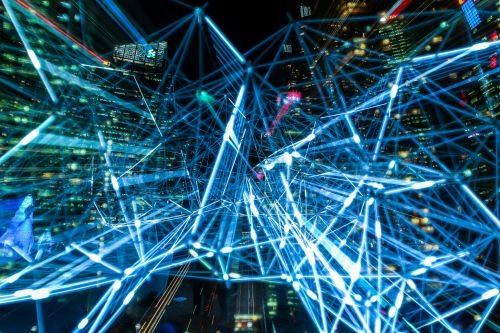
Rifkin mentions several times during his lecture that we cannot enter into the Third Industrial Revolution with technologies that are built for the Second Industrial Revolution; that is, we need to utilize a system that favors horizontal integration vs vertical integration. Centralization, close source, and trade secrets are dead; decentralization, open source, and transparency are the future. Do these values sound familiar? These new values are what EOS is being built upon, and therefore, it makes sense that EOS blockchain should be a major player in collecting, storing, and disseminating the IoT.
To start, blockchains are trustless systems, and therefore the perfect tool for navigating the inevitable challenges that arrive with human interaction and negotiation. The data that blockchains collect is immutable, widespread, and easily searchable, all without the cost, inefficiencies, and risk associated with centralized systems. These public ledgers lend themselves well to the Third Industrial Revolutions goals; instead of relying on big conglomerates to analyze and piece out the data being collected by the IoT, we, the blockchain community can do it ourselves. And, with the EOS software, we can do it well.
In EOS We Trust
The technology that will power the EOS blockchain dovetails in nicely with the goals of this new zero marginal cost society. It is obvious that such a society will need blockchain technology to thrive, but, to date, no blockchain system on the market is a “bingo”. According to the EOS white paper; however, the EOS blockchain will be able to support this movement with ease due to the following features:
Scalability: The EOS blockchain will be able to support thousands of Dapps by separating authentication from action. This means that authentication happens when a block is produced, and once the block is a part of the blockchain, those requests never have to be authenticated again.
DPOS: Delegated Proof of Stake, or DPOS will allow elected BPs (block producers) to zero in on problem Dapps, freeze the Dapps, and allow time for any bugs within the Dapp to be fixed, all without disrupting any other Dapps on the chain.
Local Node Configuration: Allows you to configure a local node to process the data you need, and ignore all of the data you don’t.
User Friendly: EOS aims to be “out of the box” so to speak, and provide Dapp developers with all the basic tools they will need to create their passion projects, allowing them more time to focus on creating value for their customers. The open-source software does this by providing a tool-kit that includes, but is not limited to account creation, account recovery, bug recovery, authentication, and key management. Basically, it will be the first decentralized operating system. With EOS’s speed and general functionality, commercial business should be able to move their millions of users over to the EOS blockchain.
Governance: Since EOS coin holders vote for block producers, all users of EOS (coin holders, Dapp developers, and block producers) will have to sign a terms-of-service agreement created by the EOS community. The community has taken to calling this a constitution, signaling their intent and belief in the wide-ranging use cases that EOS can be applied to. This means that EOS will be complex, but for the overall good of society. There will be smart-contracts, binding agreements, arbitration, and accountability. Though DPOS may seem unnecessarily convoluted, the added complexity will allow for a wide-range of voices to be heard when deciding the fate of the blockchain.
Reference: https://steemit.com/eos/@trogdor/introduction-to-eos-the-epic-blockchain-operating-system
I am convinced that if we were to alert Rifkin to all of the possibilities with EOS, he would request to join their board of directors, today. The potential synergy between block.one and the theorist would be through the roof, and makes one wonder if the timing of the film, the political atmosphere, and the EOS blockchain are “Kismet”.
EOS and a New Consciousness
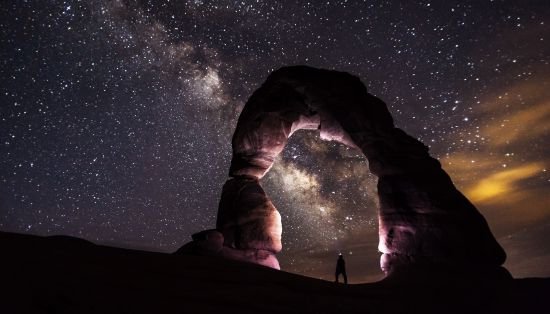
If we want blockchain technology to serve as the basis of this revolution, we will need to use the best blockchain technology that is available to us. EOS is being built with three goals in mind; ease of use (developers will be able to easily code Dapps in the environment), superior performance (will be able to process 100,000s or more of transactions per second), and governance (the nature of DPoS requires open communication and consensus between users, developers, and block producers).
The flexibility of the software means that it has vast use cases, all without fear of consolidation of power, because the blockchain distributes power more widely than any other system currently at our disposal. The EOS team knows this, and that is why they are building the system with a philosophical bent; technological prowess means nothing if power is consolidated. The EOS team And that belief is what is at the heart of the TIR, the necessity for our society to elevate from our current system of oligarchy to a world-wide social economy.
What both Rifkin and EOS are proposing is a fundamental shift in human consciousness. We are on the precipice of destruction or greatness. We need to act now. Luckily, the collective conscious seems to be shifting; our generation is reinventing the world. I believe we are entering the Third Industrial Revolution, and EOS is going to be the base on which we build upon.
About the Author:
Katie Roman is an amateur paddle boarder and Dan Larimer fan girl. She lives in Central Oregon with her husband, son, and their rabbit Chestnut.
Who are we?
EOS Go is the first source for EOS.
Software company block.one is creating EOS.IO and releasing it as open source code; thousands of individuals will need to come together to bring this new "internet of value" to life. EOS Go is uniting the community for a stronger blockchain.
Go EOS!
How to Get Involved:
Community Announcements - YouTube - Twitter - Facebook - Forums
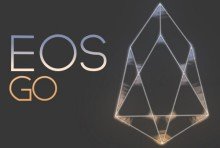
One of the biggest concerns with developing a sharing economy, is how do you define "collateral". If someone rents a car from me, and they weaken the transmission, how do I get money from them to pay for damages? Blockchain is full of scams now, so how do protect real peoples property at that stage?
EOS will be the first blockchain with built-in constitution and arbitration process, to handle these human issues when they inevitably arise.
What websites will be using Eos? Where can I get started?
Still building! Check out https://eosindex.io to see what's coming.
Excellent article! The potential of EOS is massive. Very few people truly understand this, mostly crypto enthusiasts of course. The entire world will benefit from EOS and the sharing economy!
I have not seen any other blockchain project with such extensive, comprehensive and deep approach as EOS.
I love EOS the team at BlockchainOne are obviously building something very special and unlike any other Blockchain to date.
Is there a site where someone like myself who has zero coding skills can share my thoughts on Dapp ideas? I would love for someone to create a Dapp that’s a remote computer. Since staking EOS gives a certain amount of cpu, ram, and hard drive space you could build a really nice and super fast computer just by staking some EOS. The Dapp could be called FoeverPC. The more EOS you stake the better the specs become. The Dapp producer could charge a 1x fee in EOS for the different builds. You could always upgrade when ever more power is needed.
Maybe even Microsoft could do it that way Windows could be installed.
I haven't watched the documentary, but I'm headed there NOW.
Great article and thank you for sharing as probably wouldn't have found the documentary. We have been talking about these concepts while squatting in London over 10 years ago with no electricity 14 people from 13 countries living in a 4 bedroom house with only cold water and fire pit outside to cook - planning for the Brave New World. 2012 came and went everyone moved on had kids and placed themselves all around the world. We used to go skipping for food outside cafes and supermarkets to cut waste, bring computers home which people left outside their houses when they got new ones. Hehe I used to call a few of us the new age cavemen, scavenging for RAM. Good old days. I lost faith that we can save the world, but the spark which was there is well and truly reignited over last year or so when I found crypto and I truly think EOS is on the right track to get us to safety!!! Peace and Love! Spread the word everyone!